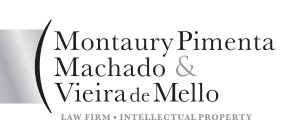Yuri Fancher Machado, Charles Edward Baptista Jones, attorneys at Montaury Pimenta, Machado & Vieira de Mello, and Weixian Zhu, counsel at Beijing Tiantai Law Firm, provide jurisdictional comparison of punitive damages.
Throughout the world history, a critical function of the civil justice system has been the deterrence of illicit practices through the imposition of monetary liability upon bad actors. Punitive damages have been an especially powerful weapon in this respect, ensuring that offenders face the real costs of their perilous behavior.
In addition to punishing a defendant, punitive damages are intended to serve an exemplary purpose, sending a clear message regarding the kinds of conduct that will not be tolerated by society. In this article, we will see an overview of its origins and usages as a deterrent for trademark infringement and other forms of intellectual property (“IP”) by bad actors within the United States, China, and Brazil.
A brief history of punitive damages
Scholars agree that the origins of the concept of punitive damages, as we know it today, date back to 1763, having gained exposure for the first time in Wilkes v. Wood1,2. In Wilkes v. Wood, the English King, displeased with an anonymous publication in the newspaper ‘The North Briton’ that offended him, determined the expedition of generic warrants to subpoena suspects. Among such suspects was Mr. John Wilkes, a militant member of the parliamentary opposition.
Mr. Wilkes’s home was subjected to a search under a general warrant of arrest by the King’s officials and overseen by a Mr. Wood. The officials entered Wilkes’s home, in an overly aggressive way, searching his belongings and seizing personal books and documents.
Incensed, Wilkes filed a lawsuit against Wood, the official who executed the search, claiming exemplary damages, arguing that the amount of compensation awarded against the official was trivial and would not be sufficient to prevent him from repeating such conduct. The jury agreed with this argument, granting a more significant amount, henceforth labeled as punitive damages.
Punitive damages were also claimed in Huckle v. Money3, in a similar case, but it was only later, in 1964, in Rooks v. Barnard, that the punitive nature of the institute was established in England. By the nineteenth century, American courts had already elucidated that punitive damages served to “punish the plaintiff and prevent similar conduct by society.” Following Grimshaw v. Ford Motor Co., punitive damages were applied by the vast majority of American states, and are attributed especially in cases of gross negligence, vicarious liability, strict product liability, short-circuit of the contract (contractual bypass), and breach of contract4.
Trademark Law and Punitive Damages in the United States
Currently, under the Lanham Act, which governs trademark law in the United States, there is no specific statutory authority that explicitly speaks to punitive damages.5 Instead, section 35(a) of Lanham act provides for the recovery of attorney’s fees by the prevailing party in “exceptional cases”6 where the infringement is shown to be fraudulent, deliberate, or malicious7.
This “exceptional cases” language in the Lanham Act was interpreted by the U.S. Court of Appeals to be consistent with the same “exceptional cases” language found in section 285 of the Patent Act as articulated in the United States Supreme Court ruling in Octane Fitness7.
The liberal interpretation of Octane lowered the threshold for a prevailing party to recover attorneys’ fees in trademark infringement cases and was adopted by the Third Circuit in Fair Wind Sailing, Inc. v. Dempster, No. 13-3305 (3d Cir. Filed Sept. 4, 2014, a standard that has also been adopted by the Seventh Circuit9.
Prevailing parties attempt to mitigate litigation costs through recovering attorneys’ fees, and while the Lanham Act does have a treble damages provision to enhance an award in certain circumstances, it is compensatory in nature and not to be used as a penalty10.
The wider issue under the current system in the U.S. is that trademark litigation is treating a symptom, not the root cause. This is due in part to insufficient deterrents to keep bad actors from attempting to infringe in bad faith in the first place.
Any attempt to pursue punitive damages in trademark infringement cases instead rests upon the tort laws of each individual state, not on the statutory language of the Lanham Act. This leads to inconsistent outcomes for trademark owners depending on where litigation is brought. Making the situation more difficult is that many states do not allow for punitive damages to be awarded unless there is first a finding of actual damages11.
While the need to find actual damages before imposing punitive damages is legally sound, from a public policy standpoint, there is a glaring flaw in this arrangement. In instances where there is bad faith infringement of an owner’s trademark that would normally trigger punitive damages, if no actual damage has yet to occur, the most a prevailing party could be awarded is their attorneys’ fees. Essentially, under the current system, if a trademark owner wishes to deter future bad actors from infringing their trademark through the use of punitive damages, they must first wait for such an infringement to cause actual damage to their brand
Waiting for actual damages to occur is the exact opposite of what a trademark owner should do with respect to an effective trademark protection strategy; being proactive and vigilant in the protection of their brand in the marketplace should be rewarded, not punished.
The lack of availability for punitive damages with respect to trademark infringement in certain instances under U.S. federal law should be reevaluated. Average litigation costs for trademark infringement are rising, and whether it be through Trademark Trial and Appeal Board (“TTAB”) proceedings or through United States District Courts, taking litigation all the way to a decision, costs approximately $300,000 - $500,000 as of 201812.
With recent changes to the laws in large intellectual property markets such as Germany and China, which have begun to implement more aggressive penalties for trademark infringement, there are clear signals that punitive damages are needed more.13 The U.S. should take steps to deter bad actors from engaging in deliberate, malicious, or fraudulent trademark infringement and consider adding clear statutory authority to either the Lanham Act or the newly passed Trademark Modernization Act14 to provide trademark owners with a remedy in the form of punitive damages.
Such an addition to existing laws would likely accomplish several goals at once: provide consistency to trademark litigation with respect to punitive damages; put bad actors on notice and deter them from engaging in bad faith infringement through higher penalties; reduce costs and the amount of time spent on litigation; and finally, reducing the overall burden on court system by reducing the number of cases being litigated due to bad actors refraining from infringement in the first place.
The Scenario in China
Under Chinese law, in a typical civil case, the plaintiff cannot request punitive damages. However, this applies to cases involving consumer protection and environmental protection, which could result in class action. With China’s resolution to strengthen IP protection, punitive damages have become more and more popular in IP cases. There is a special clause concerning punitive damages in almost each IP law department, including trademark law. Courts create rules to apply legal clauses to specific cases.
Earlier this year, Supreme People’s Court, China’s supreme court, issued Interpretation of the Supreme People’s Court on the Application of Punitive Damages in the Trial of Civil Cases of Infringement of Intellectual Property Rights (“IP Interpretation”), to interpret the elements and calculation method of IP punitive damages.
According to IP Interpretation, there are three elements when applying punitive damages, namely, 1) plaintiff’s application, 2) willfulness, and 3) gravity of the circumstances. In terms of plaintiff’s application, courts can apply punitive damages only when the plaintiff requests it. When requesting punitive damages, the plaintiff shall specify the amount, calculation method, and relevant facts.15
Although it is difficult to prove willfulness, the following factors can be taken into consideration: (i) type of the IP infringed, (ii) reputation, and (iii) the business relationship between the plaintiff and the defendant.16 The defendant is presumed to be willful under the following circumstances, namely, 1) continuous infringement after receiving cease and desist letter, 2) the close relationship between the plaintiff and the defendant, such as labor contract, partnership, licensing, dealership and agency agreement, 3) the history of business contact between the plaintiff and the defendant, and 4) mere piracy and registered trademark counterfeiting.17 The presumption of willfulness can be rebutted if the defendant is able to present evidence which proves otherwise.
It is provided in Article 4 of IP Interpretation that such elements as the infringement method, frequency, duration, geographic coverage, scale, consequences, and defendant’s behavior during litigation, are factors which can be taken into consideration when measuring the gravity of the circumstances.18 Generally, the circumstances are presumed to be “grave” under the following circumstances, 1) repetitive infringement after administrative punishment and court judgment, 2) intentional infringement, 3) counterfeiting, destroying and hiding infringing evidences, 4) huge amount of damages or profits, and 5) possible harm to the national security, public interest and human health.19
It is important to calculate the award when the court decides to apply punitive damages. The calculation is based on two factors, namely, the base figure and the multiple. According to IP Interpretation, the base figure can be the plaintiff’s actual damages, the defendant’s illegal profits or benefits resulting from the infringement. However, the reasonable expenses, like attorney’s fees, paid to stop the infringement, cannot be counted in the base figure.20 While the multiplier for punitive damages is dependent on the degree of the defendant’s fault and severity of the infringement,21 and it is within the judge’s discretion, ultimately, they can never be higher than five times the base figure.22
As a result of these recent legal developments, punitive damages are now widely applied in IP cases, especially after IP Interpretation, which reinforces the Chinese government’s resolute commitment to protecting IP rights. Most importantly, IP Interpretation now provides greater consistency to the application of punitive damages rules among the various courts throughout China and is positioning the country as one of the preeminent markets for IP rights holders.
The scenario in Brazil
In Brazil, there is no statutory provision setting forth punitive damages and the majority of the courts are hesitant to adopt this doctrine.
Nevertheless, although punitive damages are not usually awarded by the Brazilian courts, and despite the disagreement of some scholars concerning its compatibility with the Brazilian rules and constitution, recent case law related to IP matters show that punitive damages can be awarded in some specific circumstances, generally in connection with moral damages.
As a matter of fact, aware of the disparity between the compensation granted by courts and the excessive profits raised by the wrongful act of infringers, Brazilian Courts have been, in an increasing proportion, applying the so-called theory of profitable wrongdoing as a justification for deterring infringements related to Intellectual Property.
In short, this theory is centered on the dangerous logical economic conclusion reached by many bad actors, namely, that IP infringement is actually profitable in Brazil, since, even if an infringement is detected and established, the damages awarded by the courts may be much lower than the profits earned in the illicit activity.
In other words, after calculating the potential profits that may be generated from an infringement of an IP asset and consider the low amount of damages awarded by Brazilian courts, these bad actors move forward with the willful infringement, knowing that, even if they are sued and lose in court, they will profit as the law in Brazil lacks sufficient penalties to deter this conduct.
In light of this scenario, some Brazilian courts have attempted to battle this kind of conduct from the perspective of economic rationality, awarding a sort of punitive damages in some specific circumstances in connection with moral damages.
Recent case law suggests that the courts have been following objective criteria in order to gauge the amount of punitive damages to be awarded to IP rights holder, such as: (i) the economic capacity of the litigating parties; (ii) time that the IP violation lasted; (iii) territorial scope of the violation; (iv) the popularity or fame of the infringed intangible asset; and (v) intentionality of the infringer.
It is important to observe, however, that this approach differs from what has been established in other jurisdictions like the United States. In Brazil, rules of unjust enrichment can significantly limit the measure of any sort of damages granted to successful plaintiffs and the principles of proportionality and reasonableness are often carefully considered by local courts.
Despite recent decisions bringing a spark of hope to intellectual property owners, Brazil still has a long way to go in improving the trial results in cases involving bad actors engaged in deliberate, malicious, and/or fraudulent Intellectual Property infringement. Insufficient deterrents, inconsistent outcomes for IP owners depending on what state litigation is brought and lack of legislation are just a few issues that still need to be addressed in order for Brazil to continue its path towards establishing a strong IP system.
Source:
 The Trademark Lawyer Annual Issue 2022 - Read more (The role of punitive damages...) | PDF Download
The Trademark Lawyer Annual Issue 2022 - Read more (The role of punitive damages...) | PDF Download
 IPLink - Asia - Read more (The role of punitive damages...) | PDF Download
IPLink - Asia - Read more (The role of punitive damages...) | PDF Download




